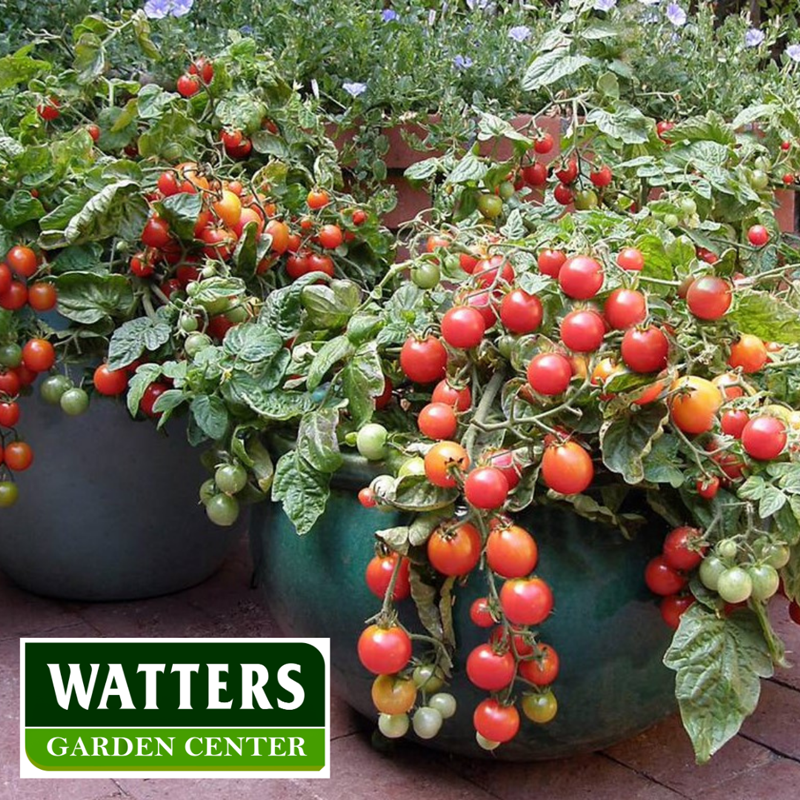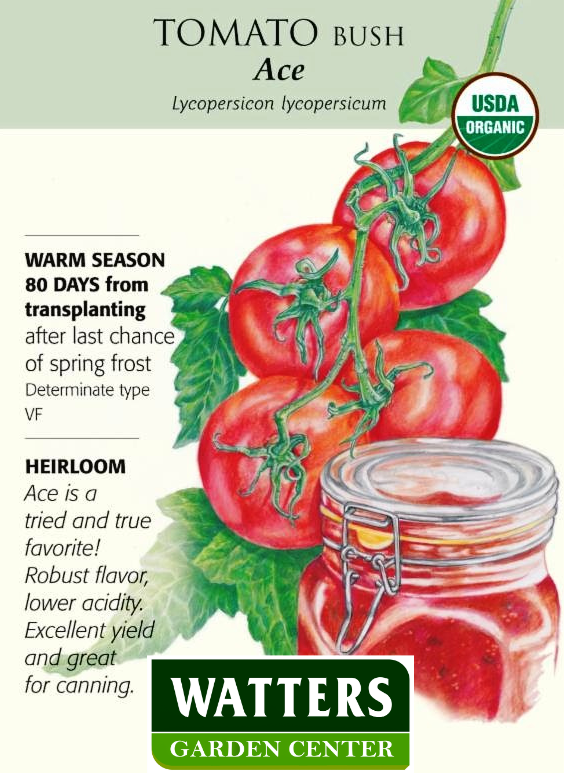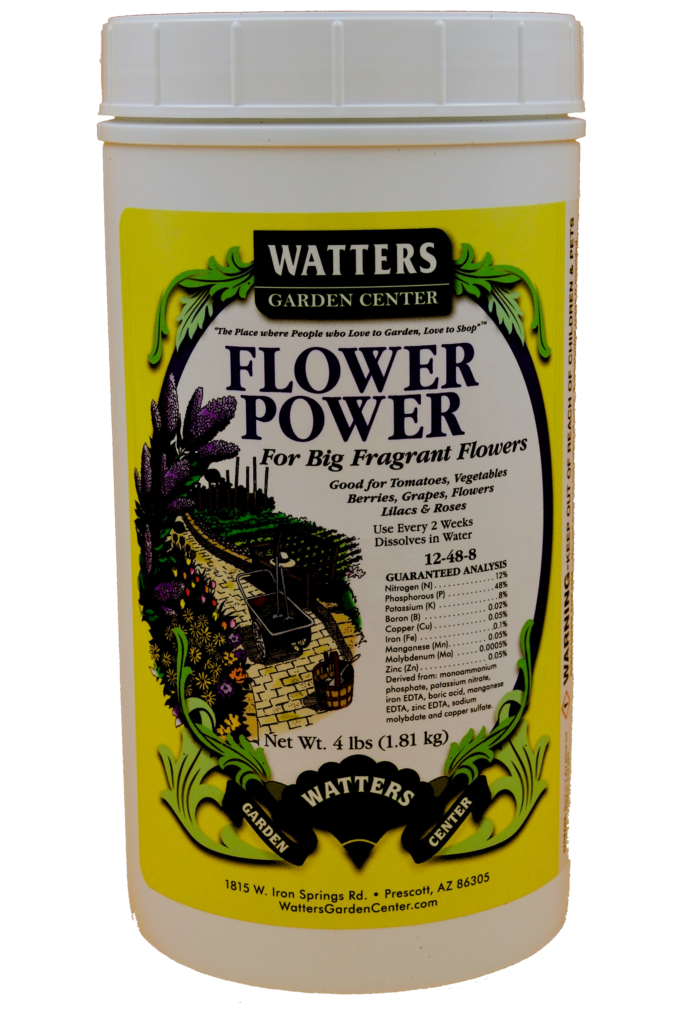by Ken Lain, the mountain gardener


With so many tomato varieties and uses in the kitchen, it’s no wonder tomatoes are one of our most popular vegetables! Watters receive a lot of customer requests for additional tips and tricks on sowing and growing the best tomatoes. It is time to start tomatoes by seed for garden planting at the end of April or choose from our great selection of Tomato varieties just in at the Garden Center
When to start tomatoes – Start tomatoes indoors 4 to 6 weeks before the average last spring frost of May 8th. Transplant your seedlings into the gardens when nighttime temperatures are at least 45°F, and soil temperature is ideally 70 – 90°F degrees.
Containers – Use shallow, sterile containers with drainage (use 6-pack trays or peat pots at the garden center). Transplant into larger, 3-4″ inch containers once the true, scalloped leaves have emerged. Biodegradable paperboard pots are ideal, easy to label, and easy to share with friends.
Seed Starting Mix – Use a lightweight seed starting potting soil, and sow seeds at a shallow, 1/8-1/4″ inch depth. Watters seed-starting soil is sterile (unlike garden soil) and lighter than potting mix, allowing for the ideal air-to-moisture ratio.
Transplanting and Supporting – When transplanting seedlings outside, plant them deeply, burying the stem and leaving 1-2 sets of leaves above ground. The buried parts of the stem will sprout roots and develop a strong, extensive root system. The top of the seedling above ground will naturally reach toward the sun. Place any stakes, cages, or other types of supports in the ground just after transplanting to avoid root damage.
Flower Power Works Great for Tomatoes, Vegetables, Berries, and Grapes It provides high levels of phosphorus in a water-soluble form. This makes it easier for tomatoes and other vegetables to produce abundant blossoms and strong stems Use every two weeks for beautiful Tomatoes and other fruiting plants. Watters Flower Power is made specifically for Arizona and gives plants that extra boost to delicious tomatoes. It works great on hanging baskets and other flowers to keep those blooms coming all season long.
Growing Temperature – Temperatures above 55°F at night are required to set fruit. Night temperatures above 75°F in the summer inhibit fruit set and can cause blossom drop (no fruit production). Wait until night temperatures are at least 45°F before transplanting.
Water – Tomatoes need about 1-2″ inches of water per week, depending on the type of soil they are growing in. 1-2 deep soakings per week in mild weather, and 2-3 per week in hot weather should be sufficient. If tomatoes are cracking, back off on the water. Too much water can burst tomatoes and water down the flavor.
Harvesting – Each variety is different when it comes to color. Check your seed packet to see when the tomato has ripened with the best flavor.
Tomato Types – Tomatoes are grouped into two main types according to growth habits and production.
DETERMINATE types (e.g., Ace 55, Glacier, Italian Roma) grow in a compact, bush form, requiring little or no staking. Fruit is produced on the ends of the branches; most of the crop ripens at the same time. One or more successive plantings will ensure an extended harvest period. Determinate types are often the choice of those who want a large supply of ripe fruit at once for canning.

INDETERMINATE types (e.g., Better Bush, Sun Gold, Black Krim) varieties continue to grow and produce fruit through the end of October. Tomatoes in all stages of development may be on the plants at one time. The plants set fruit clusters along a vining stem, which grows vigorously and long. Under optimum conditions, some can grow over 15′ feet, but in most home gardens they generally reach about 6′. Some indeterminate have a bush form with stockier vines, which set fruit clusters closer together.
SEMI-DETERMINATE types (e.g., Lizzano) grow in between these two types. The plants will grow larger than determinate varieties, but not as large as indeterminate ones. They produce a main crop that ripens at once but also continues to produce through October.
Until next week, I’ll be helping local gardeners choose the perfect tomato plants here at Watters Garden Center
Ken Lain can be found throughout the week at Watters Garden Center, 1815 W. Iron Springs Rd in Prescott, or contacted through his website at WattersGardenCenter.com or Top10Vegetables.com.


